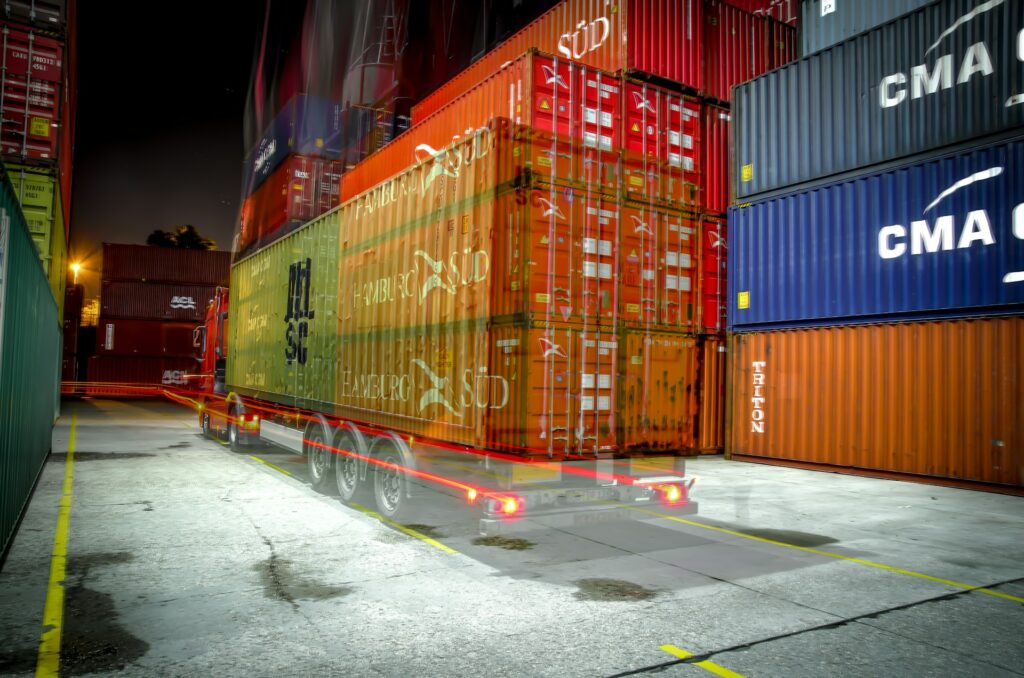Smart Supply Chains: How Artificial Intelligence Improves Logistics

Smart Supply Chains: How Artificial Intelligence Improves Logistics
The global economy of today is supported by supply chains, which act as its backbone. In order to guarantee that clients get their goods in a timely manner and at the appropriate price, it is essential that each phase of the process, from the procurement of raw materials to the last stage of delivery, is carried out without any problems. On the other hand, conventional supply chains are often plagued by problems such as unpredictability of demand, inefficiencies, and interruptions that are brought about by external events like market volatility, natural catastrophes, or geopolitical instability.
This environment is undergoing a transformation as a result of Artificial Intelligence (AI), which is making supply chains more intelligent, more efficient, and more robust. Companies are using artificial intelligence (AI) to improve their logistics and get a competitive advantage by taking use of machine learning, predictive analytics, and automation.
The term “smart supply chain” refers to a supply chain that is able to gather data and make decisions based on that information.
A supply chain is considered intelligent if it makes use of artificial intelligence (AI), the Internet of Things (IoT), and analytics for big data in order to enhance visibility, decision-making, and responsiveness. Smart supply chains are proactive and adaptable, which is in contrast to traditional supply chains. They do not just respond to difficulties; they also anticipate them and take steps to avoid them.
The following are the primary methods via which artificial intelligence (AI) optimizes logistics:
1. Demand Forecasting
Models that are driven by artificial intelligence (AI) are able to forecast client demand by analyzing past data on sales, market trends, seasonality, and even external variables such as the weather or economic indicators. Overstock and stockouts may be avoided by producing, stocking, and delivering the appropriate items. This is made possible by accurate demand forecasts.
2. Optimization of the Route
Artificial intelligence (AI) is able to suggest the most effective delivery routes by using real-time traffic information, weather updates, and previous delivery trends. This assists logistics organizations in lowering gasoline expenses, shortening delivery times, and increasing consumer satisfaction.
3. Management of Inventory
Artificial intelligence (AI) systems use predictive analytics to estimate inventory requirements and automatically initiate reorders when they are necessary. They manage the best possible stock levels in warehouses while simultaneously avoiding the immobilization of capital that is not required. This allows them to balance supply and demand.
4. Automation of Warehouses
The processes that take place in warehouses, which range from sorting and packaging to quality control, are made more efficient with the help of robotics and systems that are powered by artificial intelligence. Autonomous mobile robots (AMRs) are used to increase productivity in large-scale facilities, whilst computer vision is used to assist in monitoring the location of products in real time.
5. Management of Risk and Anticipation of Disruption
By monitoring supplier performance, geopolitical threats, and market volatility, artificial intelligence models are able to estimate the vulnerabilities of the supply chain. It is possible for businesses to make proactive modifications to their sourcing strategy and redirect shipments if they are able to anticipate such interruptions prior to their occurrence.
6. Optimization of the Final Stage of Delivery
The last-mile delivery process is one of the most costly and complicated aspects of logistics. Artificial intelligence (AI) is being used in systems that are able to optimize driver schedules, cluster deliveries, and even deploy drones or autonomous vehicles in order to save costs and enhance efficiency.
Advantages of Artificial Intelligence in the Supply Chain and Logistics Industries
Improved Efficiency: Operations that are streamlined lower the amount of wasted resources and human mistakes.
- Cost Reduction: Lower total expenses may be achieved by the use of improved inventory management, automated operations, and optimized routes.
- Real-Time Visibility: Artificial intelligence (AI) offers real analytics and monitoring for every stage of the supply chain.
- Customer Satisfaction: The customer experience is enhanced when deliveries are made more quickly and with more dependability.
- Sustainability: Through more intelligent logistical choices, artificial intelligence reduces the amount of trash produced, the amount of fuel used, and the size of the carbon footprint.
Examples from the Real World
Amazon: Employs demand forecasting using predictive analytics and artificial intelligence-powered robots in warehouses.
- DHL has begun using artificial intelligence (AI) in order to optimize routes and monitor shipments in real time.
- Walmart makes use of machine learning in order to predict consumer demand and improve inventory levels.
- Maersk: Employs artificial intelligence (AI) to forecast delays in cargo delivery and to improve the routes of container shipping.
Difficulties Encountered During the Adoption of AI for Supply Chains
Despite the fact that artificial intelligence (AI) offers tremendous value, enterprises have some hurdles when it comes to adoption:
- High Implementation Costs: Advanced artificial intelligence systems demand investment in infrastructure and training.
- Problems with Data Quality: When data is of low quality or is inadequate, the accuracy of forecasts is reduced.
- Integration with Legacy Systems: There are many supply chains that continue to be dependent on obsolete information technology systems that are challenging to modernize.
- Workforce Adaptation: Employees need to be trained in new skills in order to be able to operate alongside technologies and automation systems that are powered by artificial intelligence.
The Future of Smart Supply Chains
As time goes on, the logistics industry will become more and more automated, data-driven, and focused on the client. Supply chains will transition from being reactive to being predictive and perhaps even prescriptive as artificial intelligence continues to develop. Not only will businesses be able to anticipate difficulties, but they will also get suggestions about the most appropriate line of action to take. Supply chains will become more transparent, safe, and efficient via the integration of artificial intelligence (AI) with blockchain, the Internet of Things (IoT), and digital twins.
Artificial intelligence is becoming into the primary driving force behind smart supply chains; it is no longer only a technology that plays a supporting role. Businesses are able to develop logistics networks that are more flexible, efficient, and customer-focused thanks to artificial intelligence (AI). This is accomplished via the application of AI in several aspects of logistics, including risk management in real time, demand forecasting, warehouse automation, and last-mile delivery optimization.
Organizations that adopt supply chain optimization that is powered by artificial intelligence will have an advantage when it comes to dealing with disruptions on a global scale, lowering operating costs, and providing consumers with more value. In today’s world, when competition is becoming more and more intense, having a smart supply chain is not only a bonus, but rather an essential must.







